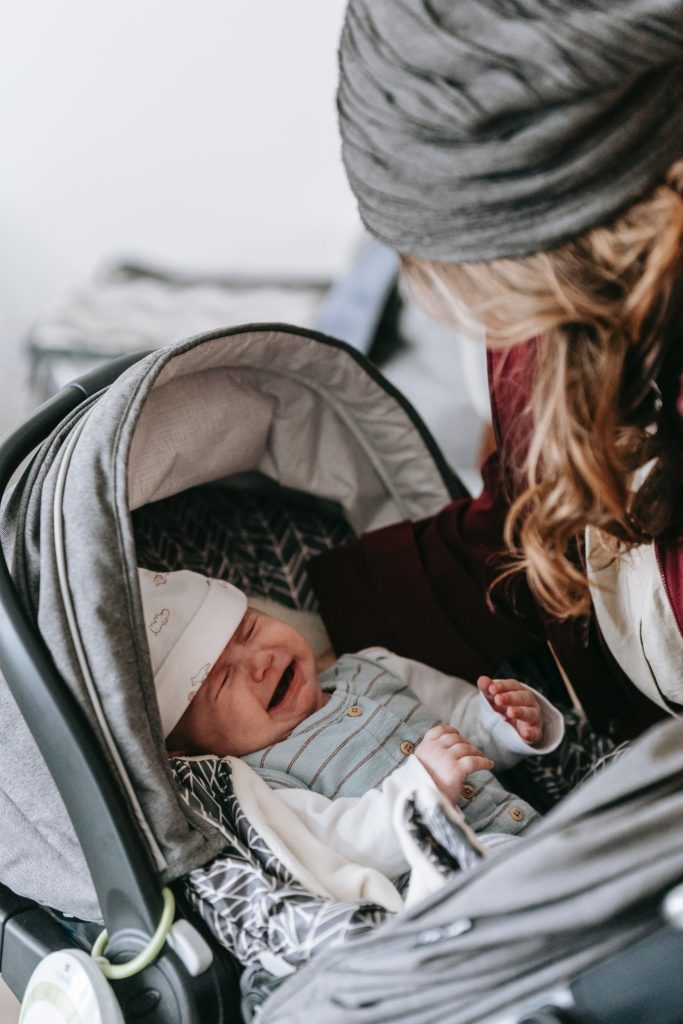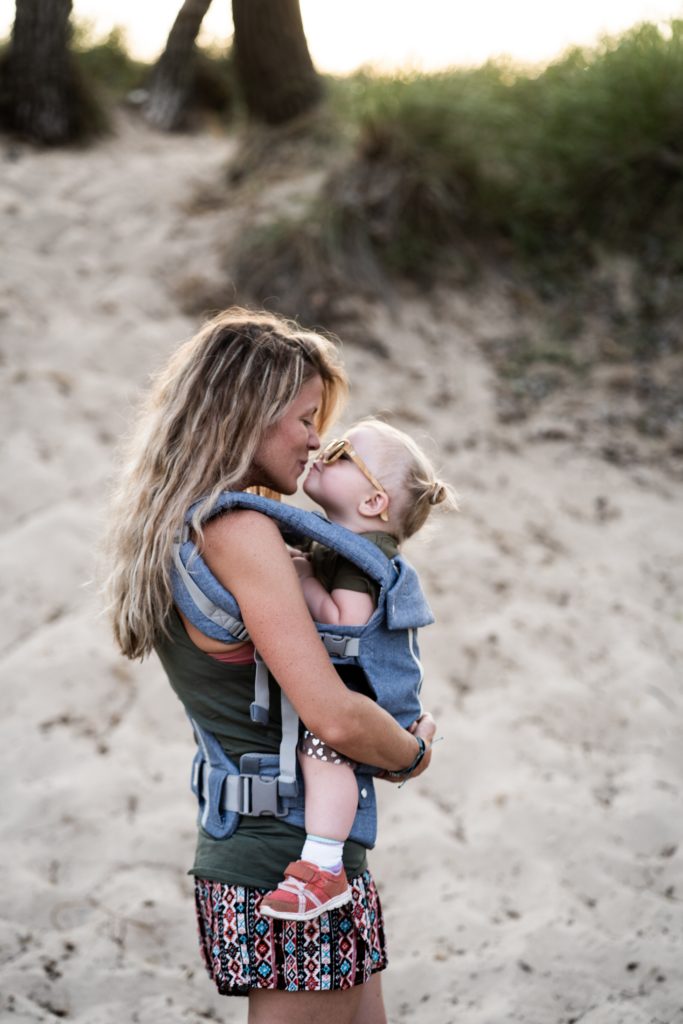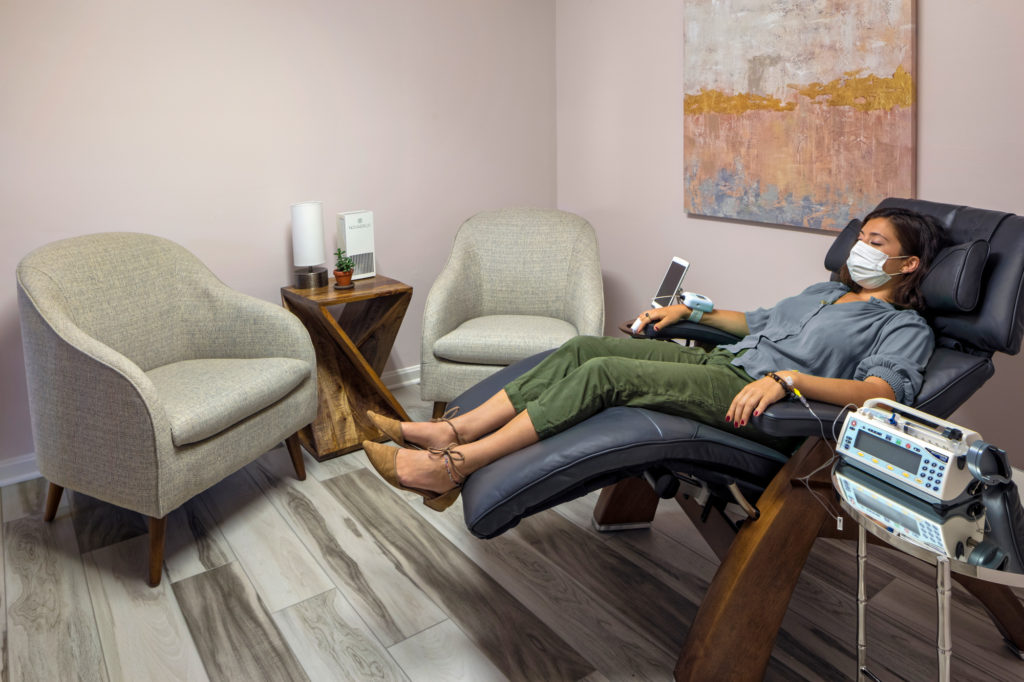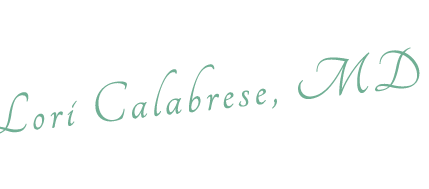
In addition to the suffering a new mother experiences from postpartum depression, the baby is at risk for lower IQ, increased likelihood of ADHD, slower language development, and increased risk of behavior problems and other psychiatric disorders.
Indicators for postpartum depression — or risk factors, as we might call them — can be identified and treated to possibly prevent this illness. Psychiatric history before pregnancy, psychiatric illness in the family, depression during pregnancy, along with environmental causes including a pandemic, adverse life events like trauma in a family member, or death in the family, and obstetrical outcomes, including baby’s health at birth, can all increase the risk that a mom could develop post-partum depression (PPD).
Jill tried to enjoy her pregnancy during the early months of the COVID-19 pandemic. While she had many joyful moments, she also worried deeply about the impact of the pandemic on her baby, and whether she, her husband, or her baby would be infected with COVID. Fear that the coronavirus would cause some sort of damage to her unborn child if it invaded her womb.
This was her first pregnancy, and she had no idea when she found out she was pregnant that a pandemic was coming. She was 3 months along when read about the pandemic. The news filled Jill with terror.
Her husband, Jason, wasn’t himself. He was painfully fearful about the pandemic and vented about it all the time. Quite honestly, she wished she had a calm home and calm marriage while she was pregnant. She’d had a tendency to get anxious for years, and little frustrations at work could really set her off with shortness of breath, sweaty palms, neck, and forehead. Her hands would tremble, and her knees would give way.
After a cool drink of water, and the calm reassuring chat with a friend, she could calm down. But until that happened, it was embarrassing.
So when she started showing these same symptoms during pregnancy, she worried. Jill knew it wasn’t good for babies in utero to feel mom’s panic and tension. She worried her anxiety would impact her baby.
Unfortunately, as the months went by, her anxiety and panic attacks grew worse. She just tried to keep her nose above water…. Then finally the baby was born.

Her doctor admitted her to the hospital to induce labor, and after hours of labor, she became more and more anxious. After she entered the transition phase of labor, the monitor revealed the baby was in distress. The nurse and doctor wheeled her to the delivery area. Their baby was born but was not breathing properly.
Jill and Jason felt panic and terror. The respiratory emergency team worked on the baby for 45 minutes then finally took him to the NICU.
After 24 hours, the baby was functioning well, and was pink all over. But it was such a traumatic experience for Jill and Jason, and they worried about the long term effect on their baby.
When they got home it started. The baby cried hard all the time. Exhaustion prevented Jill from enjoying the baby. She was in what seemed a constant state of breastfeeding…without sleep, without peace… and though Jason would walk the baby for hours, Jill still couldn’t fall asleep.

A visit to the doctor when the baby was nine months old resulted in the doctor explaining that her anxiety was sky high and so was her baby’s.
The OBGYN referred them to a group therapy directed by a pediatrician. He encouraged a special schedule to retrain the baby to nurse longer and sleep longer. Within a month the baby was sleeping at night.
Jason and Jill began to sleep. They started to wake refreshed. They were both deeply shaken by the nine months they’d spent with a hysterical baby, and were only cautiously optimistic that it would last.
Jill continued seeing her therapist by telepsychiatry sessions, and trauma from her childhood began to emerge.
Jill is continuing in therapy, and learning more and more about the damage she incurred as an abused child.
Over time, she realized that the postpartum anxiety and depression emerged in the presence of stress, and when the stress eased, she found she had access to old wounds and could get help and heal. She learned a great deal during these sessions, and often deeply wept. Jason felt so enlightened, and was so grateful to see his wife healing. It’s a long process, and while she is steadily learning and healing, more continues to emerge.

The Adverse Childhood Experiences (ACE) study found a link between abuse and family dysfunction during childhood which was connected to various risk factors for some causes of death in adults.
Authors of the PPD biomarkers study found that focusing on maternal mental health to treat and relieve illness resulted in mental and physical outcomes for everyone in the family.
Indicators for postpartum depression present a useful method for noting a pregnant woman at high risk for PPD, and treating her symptoms proactively.
To prevent PPD, it’s most effective if it is identified before symptoms emerge. That requires identifying the factors that can contribute to the onset of illness.
Think about the fact that out of every 100 pregnant women, 10-15 will develop postpartum depression. Out of that group, if any of them have risk factors for postpartum depression — such as a history of psychiatric disorder, and are not taking medications — the risk of developing PPD is even higher. In addition, if there is a family history of psychiatric illness, as well as depression during pregnancy, there is a higher risk of PPD.
Add to that environmental risk factors like socioeconomic status, adverse life events — including the impact of a pandemic, and obstetrical outcomes (like a baby not breathing at birth) or a preterm birth.

Notice that we spoke of one indicator for postpartum depression being psychiatric illness without medication. One of the most effective treatments for depression and PPD is IV ketamine treatment. With its action to increase brain derived neurotrophic factor (BDNF) to rapidly trigger dendrites and dendritic spines to grow and flourish, and remodel synapses in the brain, ketamine can bring transformation, emotional energy, motivation and initiative, as well as joy to your life. With the renewed joy, you can find you enjoy your baby, and bonding can replace the exhausted, detached feeling you may have had with your baby.
We must mention here that ketamine isn’t for everyone. It’s a treatment that helps some people dramatically, but not all — and like with so many treatments in medicine, we don’t yet understand why. IV ketamine treatment can bring many people with treatment resistant depression, including postpartum depression, into rapid and extraordinary remission. Chances are it can be transformative in your life.
At Innovative Psychiatry, we often see women with indicators for postpartum depression achieve remission with IV ketamine treatment. It’s a joyous, hope-filled, new outlook on life and relationships that can give you the energy you need for your husband and children, and your baby. The ‘funny’ thing about ketamine is that it really seems to be most effective with those whose illness is the most severe. It seems to love to show its power in full transformations.
When you come for ketamine infusions, we’ll meet you at the door and show you to your private treatment room where you can settle in and get comfortable on your recliner designed to help you relax most completely. You may bring your favorite relaxing music and a sweater to stay warm.

You’ll notice an elegant white box inscribed with the word Novaerus sitting on the table. This technology is at work in every room of our practice to protect you from infection of any kind while you’re here. Using plasma cell technology, this process was developed by the Department of Defense and NASA for the Space Station to prevent infection there. It destroys all viruses — including COVID delta, lambda and mu — bacteria, and fungi in the air. (It can even lift Staph aureus from hard surfaces. Amazing!) And our plasma cell technology can keep you safe while you undergo treatment, even during this pandemic.
This safety allows you to relax, not worry, and focus on your treatment, to get the most out of it.
We’ve gone the extra mile to ensure you feel safe and free of risk regarding infection.
Because you need to get better now…and not wait till the COVID pandemic finally comes to an end.
If you recognize the indicators of postpartum depression in yourself, and you think they might have led to the way you’re feeling now, you can get better, feel like yourself again, and enjoy your new baby.
Give yourself the extra boost you need to feel joy.

To the restoration of your best self,
